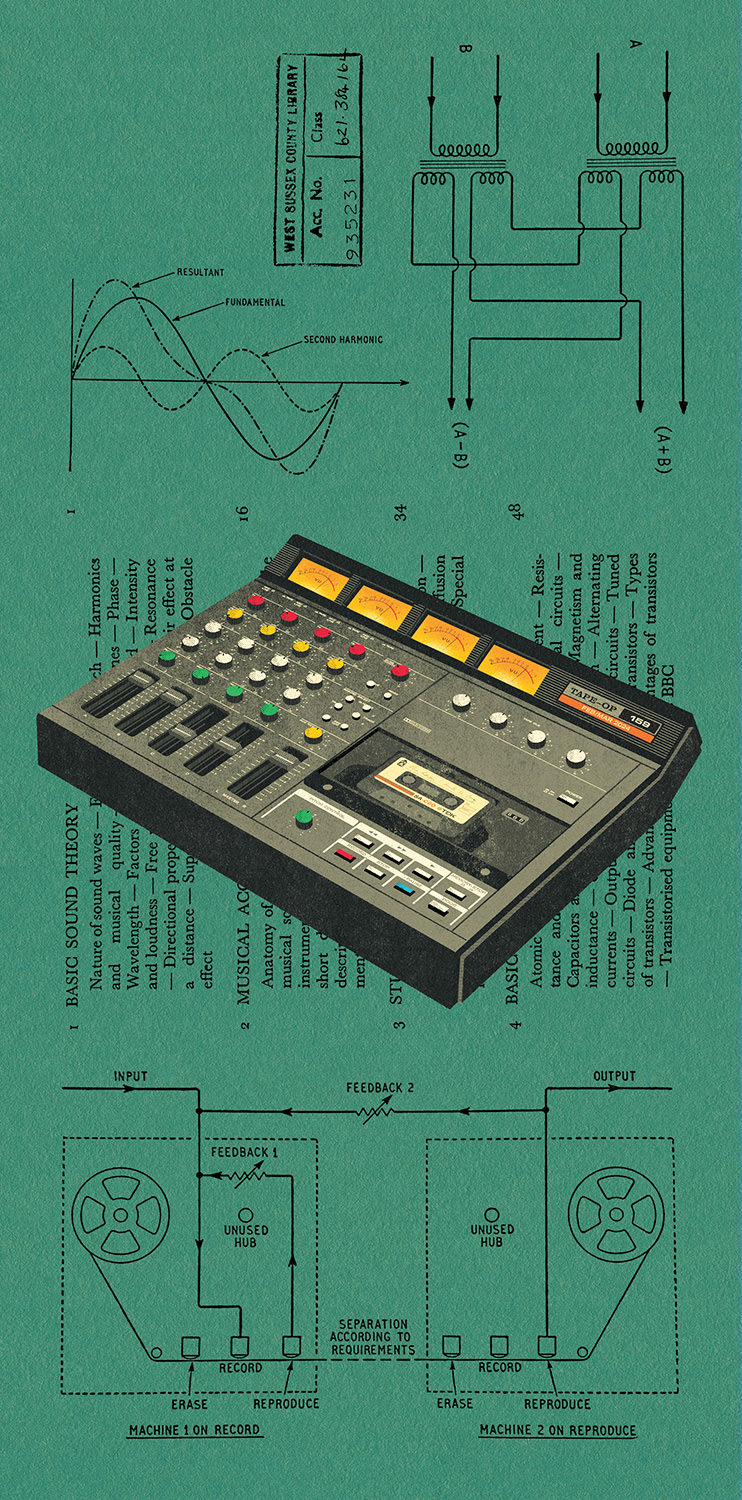I’ve had an original one channel hardware Eventide Omnipressor for years, so it’s been exciting to try the new 50th Anniversary Reissue Omnipressor 2830 Au, which keeps the functionality – both conventional and unique – that makes this a special dynamics processor, while adding some interface improvements that simplify use in a modern studio. While a dynamics processor was a surprising product from an effects company (both in 1973 and 2023), its unique feature set allows it to function as a creative effect, just like many of Eventide’s famous products. Note that Eventide also released a plug-in version [Tape Op #136] a while back.
The new Omnipressor has three key features: A compressor, an expander, and a dynamic inversion feature where loud sounds are compressed past the level of quiet sounds. All three can be accessed from a single Function knob. The expander ratios are engaged by turning to the left of 12 o’clock on the knob. Turning to the right accesses increasing compressor ratios until reaching, and then passing, “infinity,” at which point the dynamic inversion functionality is engaged. This simple interface allows easy access to any of the new Omnipressor’s features.
I was curious what inspired the idea of dynamic inversion, which I've never seen on any other dynamic processing device, so I contacted the Omnipressor's designer and Eventide co-founder Richard Factor [Tape Op #130], and he responded, “I’m happy to try but mostly fail to give you an accurate answer. Remember that this was over 50 years ago! The original idea for the Omnipressor was to use an open loop gain control system, or "side chain" as we call it now. Dave Blackmer's dbx was in current vogue, and we were using their modules for a noise reduction system in the DDL 1745/1745A Digital Delay lines since our AD/DA converters weren't as good as they needed to be [back then]. Once the design was sketched, it was obvious that a single knob could control the gain ratio from gating to inversion with no extra hardware at all. This would have been impossible with standard circuitry, but trivial with the open loop design. Having a flair for the trivial, I simply tried it to see what it sounded like! It's great with drums, which I was pretending to learn at the time, but sometimes truly appalling with lots of other material!”
The compressor has the most familiar functionality, and it works perfectly. The Omnipressor uses a VCA detection circuit, but a Universal Audio 1176 would be a classic point of reference as it predated the Omnipressor by six years. When set to a fast attack, the Omnipressor’s knee behavior lets through less transient detail than a similarly configured 1176. While Eventide had a few variations for make-up gain in its original Omnipressor (including both transformer and transformerless versions), my original unit resembles the 1176’s grainy and dark make-up gain. For the reissue Omnipressor, they’ve used a transformer-coupled make-up gain that’s less grainy than an 1176 or than my original.
I’ve often used my original Omnipressor’s compression on vocals, and on the sides of drum overheads that are split in mid/side mode; the reissue works excellent in both of these applications. When used in a mid/side separation, the addition of a new Input gain knob and a continuous Output gain (replacing the old set of stepped 10 dB buttons) gives helpful control when the stereo signal is recreated. I tried a pair of my original Omnipressors and this reissue for mid/side processing in a mastering project, and the new units worked similarly to, and perhaps better than, the Buzz Audio SOC-20 [Tape Op #91] stereo compressor that I typically use. There’s also a Link switch to use a pair of Omnipressors in a more conventional left/right configuration.
The Omnipressor 2830 Au also works well as an expander. I typically use expansion for close mics on kick or floor tom if the original recording did not have enough attack. For this purpose, I often choose a Urei LA-22 [Tape Op #39] compressor – but both the original and reissue Omnipressors worked better in my tests than my habitual LA-22.
The dynamic inversion feature (and drastic settings of the expander) can create radical patterns from standard source material. This can be blended into a mix in a similar way that Tchad Blake [Tape Op #16, #133] famously uses his Shure Level-Loc, with both more flexibility and more freedom to create original dynamic variations. The reissue Omnipressor even has a blend (Mix) knob, which is useful for this purpose, in addition to more conventional parallel compression blends. Furthermore, the reissue Omnipressor simplifies access to a sidechain, which gives even more opportunity to radically reimagine a sound’s dynamics. On the original Omnipressor, the sidechain input was on a barrier strip, without even a through output, so it could not be easily normalled on a conventional patchbay. Thus, I keep my sidechain bypassed with hardwiring on the back of my original Omnipressor. The reissue has both standard XLR and TRS 1/4-inch inputs for the sidechain, and a switch to activate or deactivate it – in conjunction with the dynamic inversion feature, it gives easy access to creating new and unexpected patterns.
The one initially puzzling interface element on the new Omnipressor – which has been preserved from the original – is separate Atten (attenuation) and Gain Limit knobs. Because drastic dynamic changes can create out-of-control results, these can be tamed with the Limit controls, and sometimes both are needed. For more conventional uses, they can be left fully open.
It’s fantastic that Eventide has preserved the power, quality, and versatility of its original Omnipressor, with modest interface improvements that address some of the small challenges of the original design. It’s reasonably priced for a high-quality compressor, and all of the additional dynamic flexibility results in a product that can serve many purposes well.




_disp_horizontal_bw.jpg)